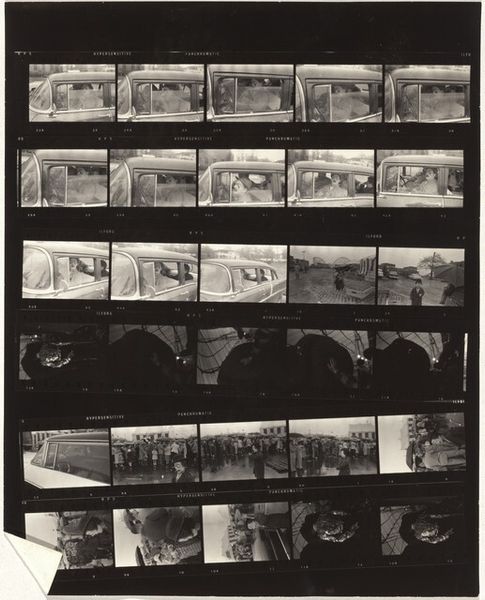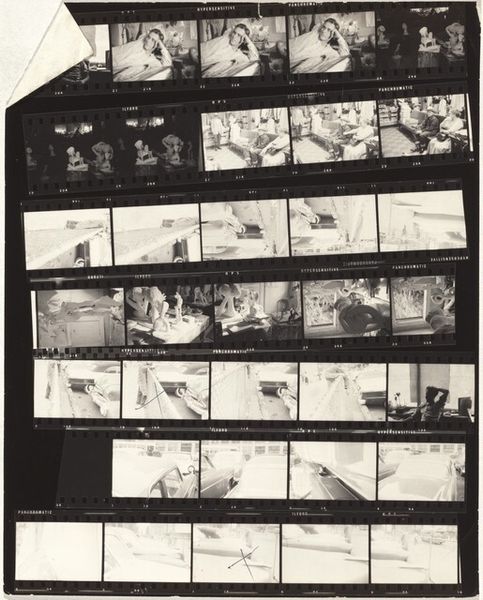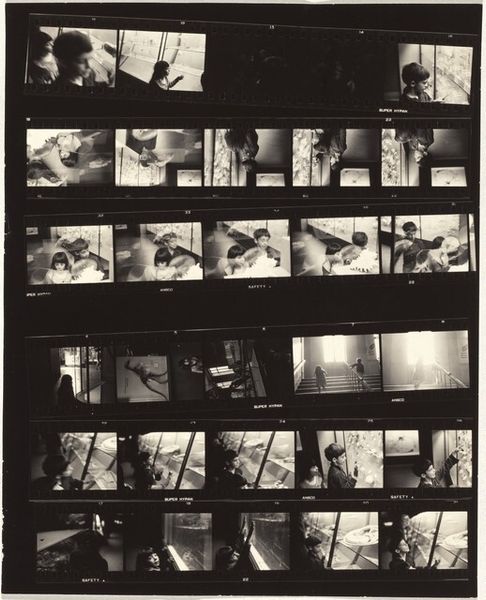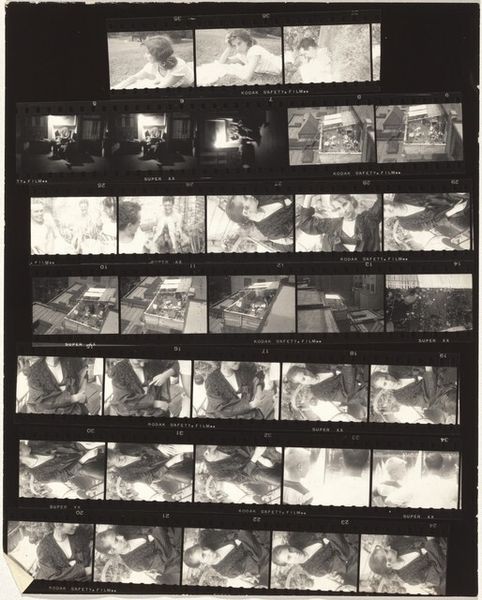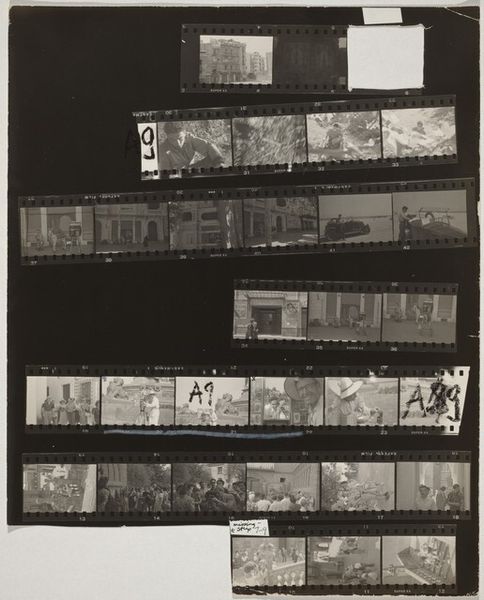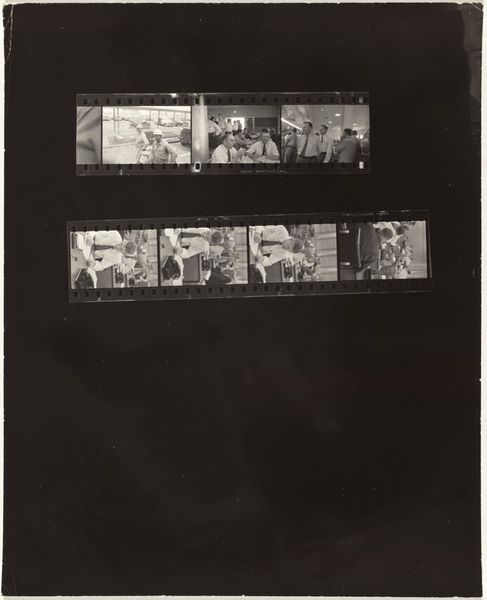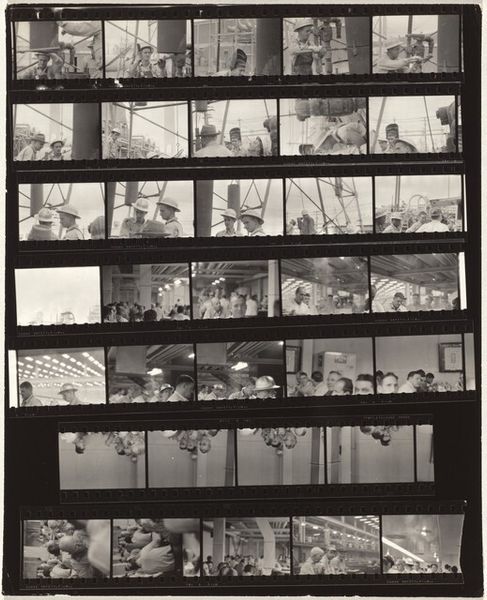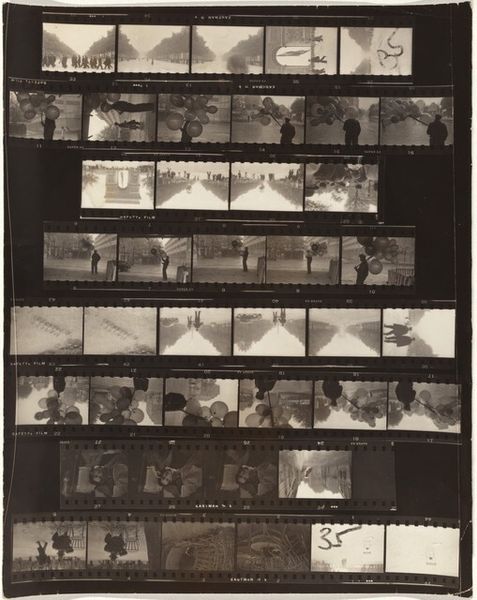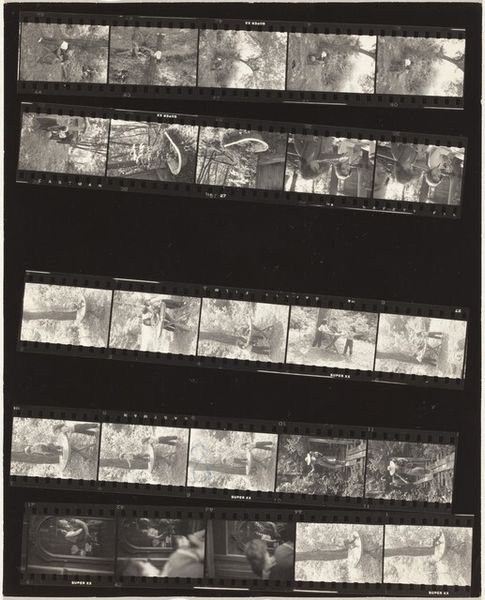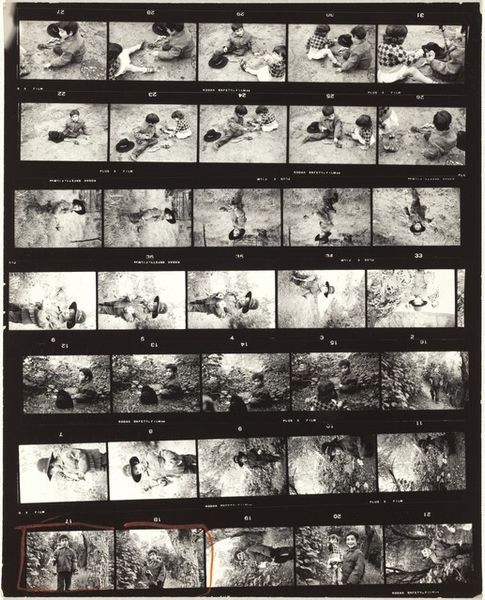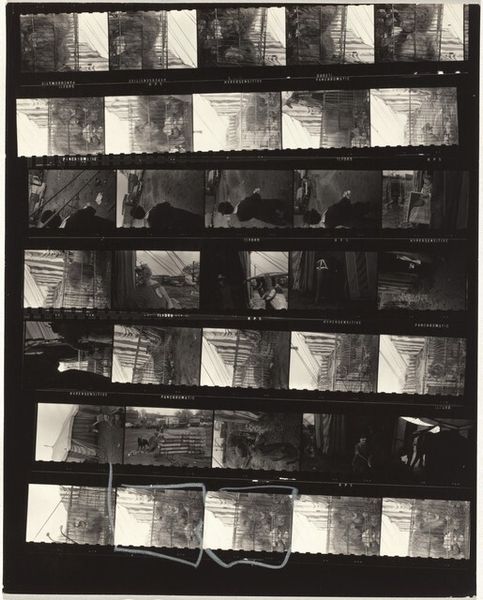
print, photography, gelatin-silver-print
#
portrait
#
abstract-expressionism
#
film photography
# print
#
photography
#
gelatin-silver-print
#
monochrome photography
#
monochrome
Dimensions: sheet: 21.5 x 27.7 cm (8 7/16 x 10 7/8 in.)
Copyright: National Gallery of Art: CC0 1.0
Curator: Here we have Robert Frank's "New Lost City Ramblers III," dating from 1958 to 1959, a gelatin-silver print. Editor: It looks like a discarded reel of film. The contrast between the sharply focused band members and the abstract gray expanses is really striking. What was Frank aiming for here? Curator: Formally, the contact sheet arrangement allows us insight into Frank’s working methodology. We can see his sequencing, the rhythm created by the repetition and variation of poses. There's a real dance here between control and accident. Editor: I am really drawn to the materiality of this piece. It exposes the means of photographic production, almost like he's flaunting the industrial process that transforms people into consumable images. Look at the indexical trace of each frame—the film’s own perforations! Curator: Yes, but it goes further. It's a study in semiotics—the Lost City Ramblers, with their acoustic instruments, presented in these serialized frames. Are they artifacts of a fading musical culture, mediated and preserved by the mechanical eye? What are these images actually conveying? Editor: Precisely. Consider what's absent: color, context, a real sense of place. We're left with these stark portraits presented as raw material, hinting at the broader social conditions surrounding folk music in post-war America. And the strange frames intermixed amongst them: fields of barren earth, which suggests an economic barrenness. Curator: The grayscale is essential to the narrative here, wouldn't you agree? Stripping away the vibrancy allows for the essential formal and thematic components to resonate more powerfully. We notice the band member's garments, their instruments, and a type of rural sadness. Editor: I think the sadness, or what you’re terming sadness, originates less from within the subject, or intrinsic to Frank's choices, and more from the material conditions within which this artwork was conceived: late 50s America and a rapidly evolving social, artistic, and economic landscape. Curator: I find I’m intrigued to continue to dive deeper into these layered images and to investigate how structure influences perception. Editor: Yes, that exposure of both process and raw emotion resonates, especially as we think about labor and documentation of art’s construction.
Comments
No comments
Be the first to comment and join the conversation on the ultimate creative platform.

